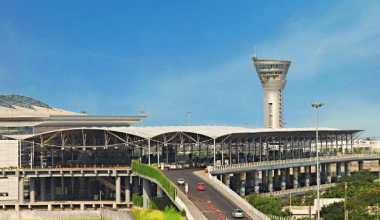The process of issuing airline tickets is not as straightforward as people might think. It is made up of numerous rules, systems and interactions that determine how tickets are created, distributed, and used. This article will try to clarify what an airline ticket is, how the ticketing process operates, what qualifications an agency needs to have to issue tickets, and what are the possible developments awaiting this process in the upcoming future.

Airline Ticket: The Definition
An airline ticket represents a document confirming a passenger’s purchase of a seat on a flight. It can come in paper and electronic formats. Nowadays, most tickets are digital, while paper ones are becoming more a thing of the past.
The air ticket has several important functions:
- It finalizes the agreement between a passenger and an airline;
- It acts as a travel document confirming and securing seat and service allocation;
- It may regulate the relationships between airlines which are engaged as part of a single journey.
When a flight goes through more than a single airline, only one of them has the ownership of the ticket. This ownership makes the airline accountable for the passenger and its status (regarding check-in, boarding procedure, flight status, etc.).
Airline Ticket Issuing Workflow
The process of airline ticket issue can be divided into three steps, each of them involving several procedures.
Flight search
This is the primary step of the process. Normally it is carried out via one of the resources mentioned below.
Airline web pages. When a passenger makes a website flight search (airline’s or other booking resource), the query he or she makes goes via the respective travel booking software to the central reservation system (CRS) of the carrier. Then the CRS gives back a list of flight options for the selected dates. Quite simple so far!
Online Travel Agencies. If you wish to operate offers from multiple airlines and build a complex itinerary, Online Travel Agencies (OTAs) are at your service in this case. They pull flight data from various sorts of travel xml api, which include large Global Distribution Systems (GDSs), consolidators, partner vendors, etc.
Also Read: Future Frontiers: Predictions for the Next Big Metal in Aerospace
Metasearch engines. Resources like Skyscanner, GoogleFlights, Momondo and others collect data from OTAs and airline CRSs to display as many available flight options as possible. Available flights are also pulled from low-cost carriers which usually do not distribute their flight info to GDSs. However, metasearch engines normally just forward to other resources for booking process completion and do not cover the respective process themselves.

Flight booking
The next step is to make a reservation. When a traveler chooses a specific flight, the seller — either an airline website or an OTA — verifies with the CRS if the option is still valid and has the same price. Then it gathers the data of the traveler to create a digital document called a Passenger Name Record (PNR). This document has important information about the trip.
Ticketing
In order to finalize the booking, travelers need to make payment for the flight. The PNR document is not enough for issuing a ticket. Both airlines and OTA use payment gateways — third-party services that handle online payments and cater for financial security. In most cases, travelers pay for the flight right after entering the required booking information.
Nevertheless, banks do not transfer the money to airlines immediately. It might take three days or even more to verify the payment details and go through the entire confirmation process related to payment and seat allocation. That’s why there is a delay between reservation (when you get a PNR number) and the ticket issue.
Once payment confirmation takes place, the airline will add the fare date to the PNR. This record is used to issue a ticket. Finally, the traveler obtains the complete itinerary receipt to the designated email address.
Main Accrediting Organizations Involved with Ticketing: IATA and ARC
Ticketing is a complex process subject to multiple regulations. All of this is because airlines need to ensure they will receive payment for the provided seats. This led the industry to establish large organizations responsible for managing transactions between airlines and members of their distribution network (travel agencies, travel management companies, etc.). These are the following.
BSP from IATA – for travel companies outside the US
IATA is the largest airline association in the world. It combines 290 members coming from 120 countries. It was established in 1945 in Cuba and now is headquartered in Canada. It operates an internal payment processing system called Billing and Settlement Plan (BSP). This system collects funds from travel distributors and hands these over to the airlines. It ensures a secure way to manage finances for all the involved ticketing process stakeholders.
Only IATA-certified travel businesses have the right to access BSP and issue tickets in the name of airlines outside the US.
ARC for US-based travel distributors
The Airlines Reporting Corporation is a US-based organization that has been operating since 1985 and currently unites 230 airlines and 10,700 travel companies as its members. It acts as a mediator between travel distributors and airlines for financial operations using its own payment processing. All the companies registered in the US need ARC certificates to be entitled to ticket issuing for the member airlines.
The type of accreditation for a company that wants to handle the ticketing process depends on its location. But usually, larger tourism entities have both ARC and IATA for proving their reliability.

Ticketing process without IATA and ARC
Small travel companies that cannot afford to join big associations like IATA or ARC face a challenge when they need to issue tickets for the flights they book. They have to work with a certified partner that can help them with this task for a reasonable fee. There are two main types of partners they can choose from.
One type is airline consolidators. These are wholesalers buying flight inventory in bulk at discounted rates and then selling it to retailers with a designated markup. Travel agencies that work with airline consolidators can make use of their access credentials to plug into the GDS and ticketing. Moreover, this cooperation allows agents to operate a vast range of airfares, including published and private ones.
Another type is host agencies. These are intermediaries between travel retailers and travel suppliers. All entities operating under one host agency utilize a single set of credentials for booking travel products and ticket issue.
Future of Ticketing
Currently, one booking flow creates three different documents – a PNR, an e-ticket, and an EMR that is used to record and keep track of service fees and related payment transactions. In the next few years, IATA plans to launch ONE Order – an XML-based standard combining all these files into one, with access under a single reference number.
The goal of this initiative is to make the booking process easier for travel agents, enable data sharing between airlines, and improve the experience of passengers as they will no longer need to remember multiple figures related to their journey.






